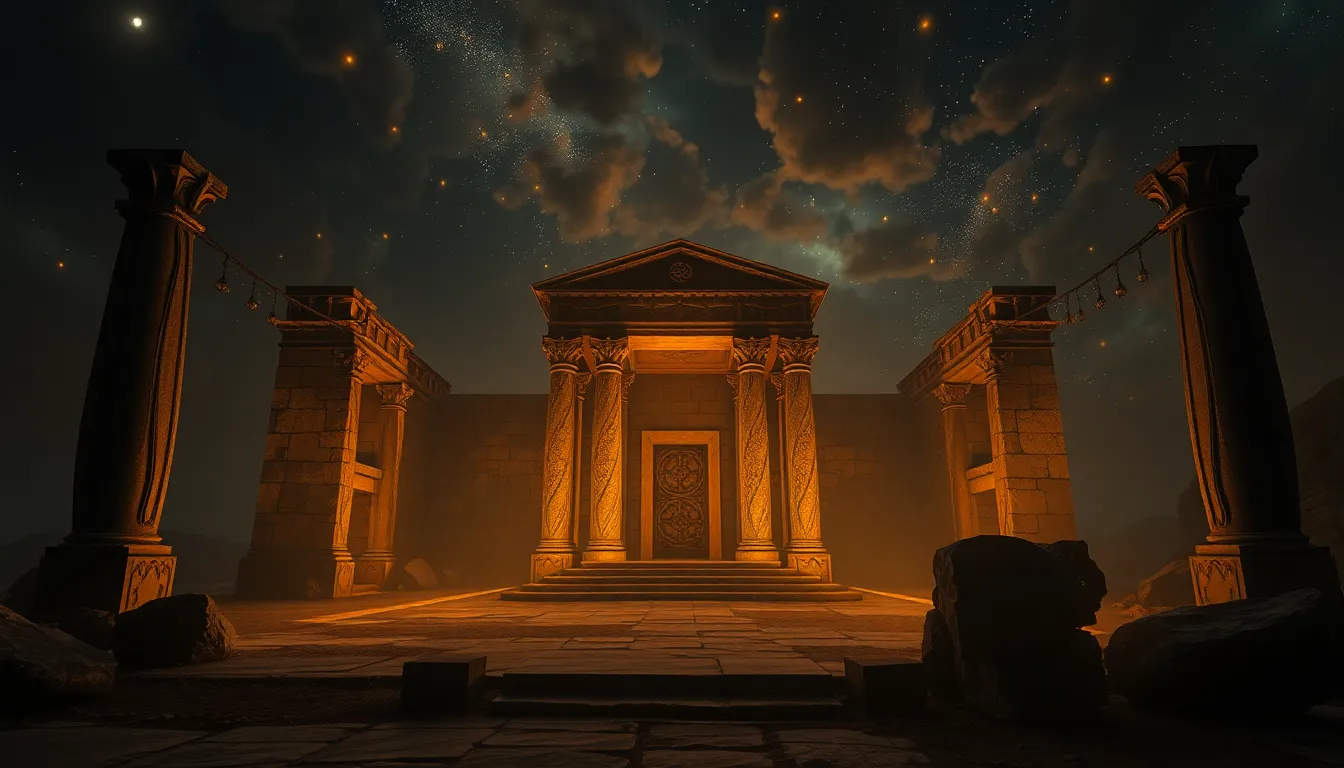The Temples of Time: Sacred Places That Defy History
I. Introduction
The concept of “temples of time” refers to sacred places that resonate with the echoes of history, embodying the spiritual and cultural essence of humanity. These sites serve not only as remnants of past civilizations but also as living testaments to the enduring nature of human belief and aspiration. Throughout history, sacred places have played a significant role in shaping societies, providing a sense of identity, and facilitating spiritual experiences. This article aims to explore temples that transcend time, examining their historical significance, spiritual energy, and cultural relevance.
II. Defining Sacred Spaces
Sacred spaces are integral to various cultures around the globe, serving as locations for worship, meditation, and communal gatherings. They embody the beliefs and values of the societies that construct them, often reflecting the divine in architectural form.
- The role of sacred spaces in various cultures: Different cultures have unique interpretations of what constitutes a sacred space, influenced by religious beliefs and historical contexts.
- Historical significance and the idea of timelessness: Many sacred sites have remained unchanged for centuries, offering a glimpse into the spiritual practices of ancient civilizations.
- Examples of sacred places across different religions: From the Western Wall in Jerusalem to Mecca’s Kaaba, sacred sites vary widely in form and function.
III. The Ancient Wonders: Temples That Withstood the Test of Time
Some temples have become iconic symbols of human ingenuity and spirituality, standing resilient against the ravages of time.
- The Great Pyramid of Giza: Originally constructed as a tomb for the Pharaoh Khufu, this architectural marvel has transformed into a temple of sorts, embodying the ancient Egyptians’ religious beliefs about the afterlife.
- Stonehenge: This prehistoric monument, composed of massive stones arranged in a circular layout, remains a subject of mystery and speculation, believed to be a site of ritual and astronomical significance.
- The Parthenon: A temple dedicated to the goddess Athena, the Parthenon stands as a monument to ancient Greek civilization and its cultural achievements.
IV. The Spiritual Energy of Sacred Sites
Many sacred sites are believed to possess unique energies that enhance spiritual practices.
- The concept of ley lines and energy centers: Ley lines are thought to be invisible pathways of energy that connect sacred sites across the globe, creating a web of spiritual significance.
- The impact of geographical locations on spiritual significance: The natural landscape often enhances the spiritual experience, as seen in temples situated in breathtaking settings.
- Personal testimonies and experiences at sacred sites: Visitors often report feelings of peace, inspiration, or transcendence while at these locations.
V. The Role of Temples in Cultural Identity
Temples are not just places of worship; they are also powerful symbols of cultural heritage and national pride.
- Temples as symbols of national pride and heritage: Many nations regard their sacred sites as integral to their identity, fostering a sense of belonging among citizens.
- The relationship between architecture and cultural expression: The design of temples often reflects the artistic and architectural styles of their time, serving as a cultural expression.
- Case studies:
- Angkor Wat: This temple complex in Cambodia, originally constructed as a Hindu temple, symbolizes the rich cultural history of the Khmer Empire.
- The Temple of Heaven: Located in Beijing, this site is an architectural masterpiece that represents the relationship between heaven and earth in Chinese cosmology.
VI. Sacred Places in Modern Context
As the world evolves, the significance of sacred places continues to transform, highlighting the need for preservation and respect.
- Preservation and conservation efforts: Many temples are now protected by national and international laws aimed at preserving their integrity for future generations.
- The impact of tourism on sacred sites: While tourism can provide economic benefits, it often raises concerns about the commercialization and degradation of these sacred spaces.
- Balancing accessibility with spiritual integrity: Efforts are underway in many locations to manage visitor access without compromising the spiritual essence of the sites.
VII. Mystical Phenomena Associated with Temples
Temples often become the center of legends, myths, and supernatural occurrences that enhance their allure.
- Legends and myths surrounding sacred places: Many temples are steeped in folklore, believed to be the sites of significant historical events or divine interventions.
- Historical accounts of miracles and supernatural events: Throughout history, numerous miracles have been attributed to sacred sites, reinforcing their importance in belief systems.
- The influence of these phenomena on belief systems: Such stories contribute to the spiritual significance of these places, often leading to increased devotion among visitors.
VIII. The Interplay Between Science and Sacredness
The interaction between archaeology, science, and spirituality offers new insights into the understanding of sacred sites.
- Archaeological discoveries and their implications: Excavations often reveal new information about ancient cultures and their spiritual practices.
- The role of modern science in understanding ancient structures: Technologies such as ground-penetrating radar and 3D modeling allow researchers to explore these sites without disturbing them.
- Case studies:
- Göbekli Tepe: This archaeological site in Turkey, thought to be one of the oldest religious sites, challenges previous understandings of human civilization and spirituality.
IX. The Future of Sacred Spaces
The meaning of sacredness is evolving, reflecting contemporary societal values and spiritual practices.
- The evolving meaning of sacredness in contemporary society: As society changes, so do the interpretations and uses of sacred spaces, adapting to modern spiritual needs.
- Emerging trends in spiritual tourism and pilgrimage: More people are seeking authentic spiritual experiences, leading to a resurgence in pilgrimage practices and visits to sacred sites.
- Predictions for how sacred places will change in the coming decades: The future may see a fusion of technology and spirituality, with virtual experiences complementing physical visits to sacred sites.
X. Conclusion
Sacred places are integral to the human experience, offering insight into our history, culture, and spirituality. The temples that defy history continue to inspire awe and reverence, reminding us of our shared humanity. As we move forward, it is essential to explore these timeless sites with respect and appreciation, ensuring their preservation for future generations.


